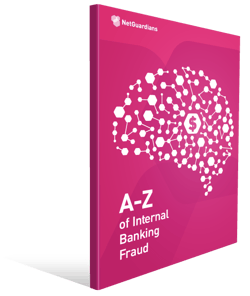Software that focuses on transactions rather than staff behavior to spot and stop internal fraud avoids the problem of personalizing fraud risk, which can demotivate staff and put off new recruits. What’s more, it’s better at preventing fraud, writes Sandy Lavorel.
Opportunity makes the thief. Worryingly, Covid-19 has provided the opportunity for many, including a section of the workforce that society wants and needs to trust most: banking staff.
An Association of Certified Fraud Examiners (ACFE) survey in December 2020 revealed that 48 percent had seen an increase in internal fraud. That’s shocking enough. But a remarkable 71 percent expected to see it increase further in the coming 12 months. What is more, nearly a quarter expected a “significant” increase during that time.
The causes and challenges of internal fraud
Without doubt, the fact that Covid-19 has shut banks’ offices, forcing many to work from home, is partly to blame for this rise in internal fraud. Isolation, increased workloads and pressure, uncertainty about the future, along with new working practices, have all taken their toll on staff motivation and loyalty. In addition, banks have fared well during the pandemic, their profits buoyed by increased trading revenues, government loan and income protection schemes, as well as the rapid growth in low-cost digital banking. It’s no surprise that more staff have been tempted to commit fraud. The big question concerns what banks can do to effectively curb this behavior without making it seem as if they don’t trust their workforce.
No one likes to feel that their every move is watched. Over-surveillance can demotivate staff and make it harder to recruit new talent. Another problem is that the bank staff likely to commit fraud are often those best placed to cover it up.
But banks do need to know that their clients’ money is safe from all threats – including internal ones. The ACFE survey highlights that getting the balance right between surveillance and trust is proving hard, and indicates that another approach to stopping internal fraud is needed. One that is already proving to be very effective focuses not on staff but on transactions to spot rogue events.
Software that scrutinizes transactions (first) and links it to human behavior (second)
Any banking transaction leaves a very detailed data trail. Everything about a transaction – from where and when it was originated, the device used the destination account and bank, amount and currency, who at the bank processed it – it’s all recorded. This information adds up to a very detailed picture that can be used to accurately assess the risk of any transaction being fraudulent.
The beauty of this approach is that no one is singled out, no one at the bank is pinpointed as a fraud risk. What is under scrutiny is not staff members, but transactions. Should something about a transaction not fit the usual profile, an alert is raised and the reason investigated. Only when something suspicious about how it was handled at the bank does the investigation include staff.
Machine learning and artificial intelligence software is used to capture all the data mentioned above to build up a profile of what bone fide behavior looks like. Each time a new transaction is made, it is compared to this profile. Should something anomalous occur, an alert is raised. In this way, a relationship manager (RM) taking small sums from a customer’s account, for example, can be spotted because the action does not fit with his usual behavior with other customers.
Robust results
Where this type of software has been run over historic data, the results have been impressive. It has spotted not only all the internal fraud already known to the bank, but also new fraud cases and types. Further benefits include the fact that the software throws up fewer false alerts – 83 percent fewer – cutting fraud management time by up to 93 percent, reducing operating costs by 77% and freeing up resources elsewhere.
When used in conjunction with fraud-mitigation best practices, such as standardised pre-employment screening, as proposed by Aequivalent, four-eyes validation, staff training and education about warning signs, banks achieve a very high level of protection against internal fraud while maintaining a culture of trust.
With internal fraud on the rise, banks’ reputations are at stake, not to mention the threat of huge fines from regulators, who require banks to do all they can to protect customers’ money. Currently, solutions to preventing internal fraud are clearly not working – it’s time to adopt a smart new approach that does.
Learn more about internal banking fraud:



